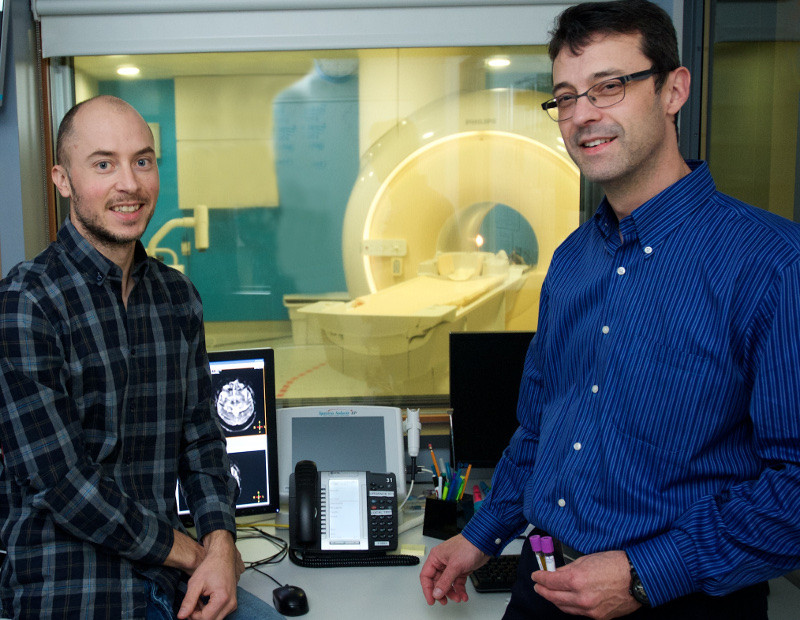
If all the science world’s a stage, Fragile X researchers are more than merely players.
They are center stage.
So believes Francois Corbin, MD, PhD, professor, Université de Sherbrooke, Canada, who directs the university’s Fragile X Clinic. Corbin, who has received more than $100,000 in FRAXA support since 2012, is leading a pilot randomized Phase II trial, exploring the tolerability and the synergistic effect of a combined therapy. They will combine minocycline, which is often used to treat acne, and lovastatin, which is used to lower cholesterol. Both drugs target specific alterations in the brain of Fragile X patients that would potentially have a combined powerful effect on their behavior.
“To my knowledge, this is the first time we have a clinical trial with two different drugs combined to act on two different targets,” Corbin said. “The combined action of both is much more powerful than taken each of them separately.”
Fragile X Syndrome is caused because a particular protein, FMRP (Fragile X mental retardation protein), is missing. Researchers cannot yet replace the protein in the brain, Corbin said, but “drugs can correct problems caused by the absence of FMRP. By mimicking the function of FMRP, neuron plasticity will be restored, leading to normal brain development and improved learning.”
The pilot trial looks to establish links between lovastatin and minocycline and effects of these drugs on brain activity and neurochemistry using functional MRI, along with other techniques, to assess synaptic plasticity in patients with Fragile X. “We are measuring the activity of the brain before starting the drug and three months after taking the drug” Corbin said. “We hope these drugs will induce beneficial changes in brain activity, the first step toward improving learning and behavior”. “We don’t want to treat symptoms. We want to change the natural course of Fragile X.”
The purpose of the research is to help those with Fragile X to improve behavior and learning. “Learning is much slower in people with Fragile X,” Corbin said. “To change the rate of learning is our long-term goal. If we improve their ability to learn, it will be easier for them to control their behavior. Females with Fragile X have some of the same anxiety as boys, but many have the ability to control anxiety and act better.” “Long term treatment will be necessary in order to change the rate of learning. Changes in brain activity measured objectively by fMRI will comfort parents and foster long-term use of this drugs that will lead to improved neuronal plasticity, learning and behavior.” Corbin’s research, along with those of Fragile X researchers from all over the world, have caught the attention of those researching treatment of intellectual disability and autism from unknown causes. “In Fragile X, we have the privilege of knowing what is going on,” Corbin said. “It’s an absence of a protein, FMRP. Everyone is looking at Fragile X research. If treatment works in Fragile X, there is hope it will work for other causes of intellectual disability and autism.”
Most important to Corbin is safety.
Minocycline and lovastatin are both safe drugs, he said, that have been tested safely for many years with limited to no side effects in patients of 13 years and over.
“First thing is not to cause harm with the drugs or the procedures. We want participants to have a good experience, to come back to the clinic!” Corbin said. “We need to be sure the drugs are safe, and blood sampling is a prerequisite to ensure the absence of side effects. Besides that, there is no injection, no other invasive approach.”
Corbin said his team of investigators, which includes neuropsychologist Dr. Jean-François Lepage, and neuroimaging expert Dr. Kevin Whittingstall, is recruiting patients 13 years old and older. Parents are asked to do some training at home before the trial. “fMRI is very important in this trial but not an easy task for them; they have to stay calm without movement during the procedure and tolerate noises of the system” he said. However, with appropriate training, most of them are able to do it with success.”

